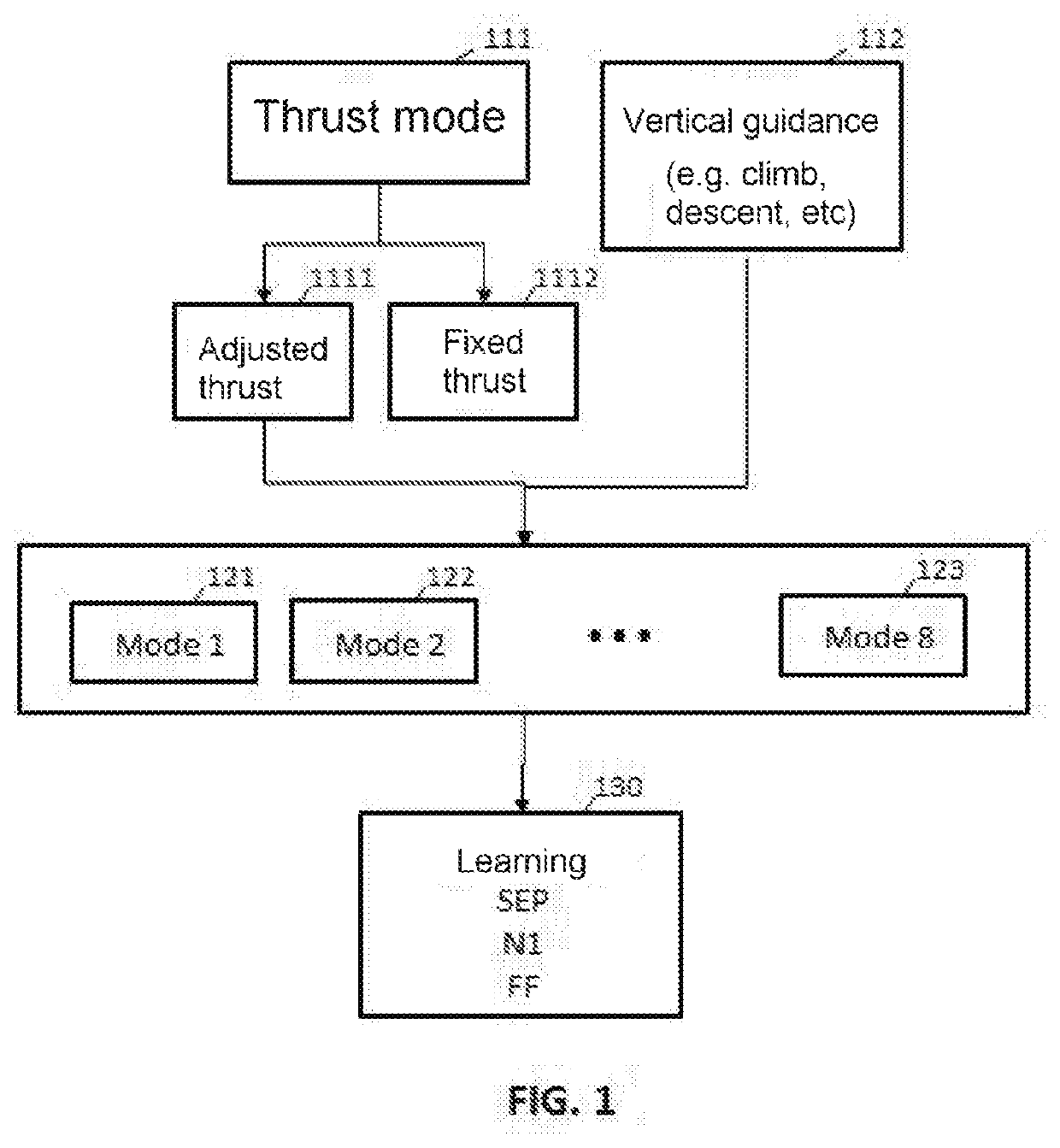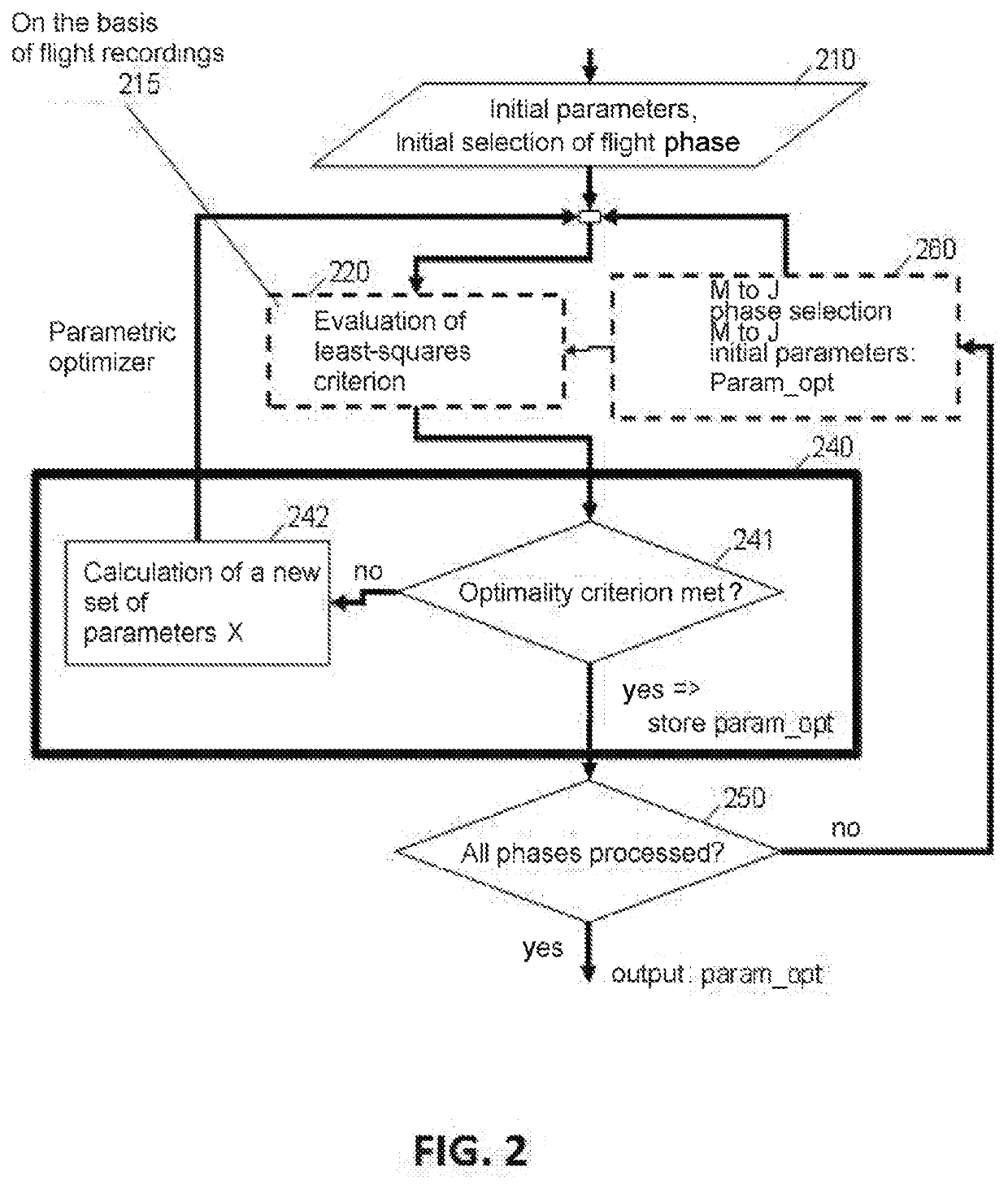Optimizing a parametric model of aircraft performance
a parametric model and aircraft technology, applied in the field of avionics, can solve the problems of inability to optimize aircraft operations, aircraft models that are not royalty-free, and disadvantageous dependency situation
- Summary
- Abstract
- Description
- Claims
- Application Information
AI Technical Summary
Benefits of technology
Problems solved by technology
Method used
Image
Examples
Embodiment Construction
[0020]FIG. 1 illustrates the influence of thrust mode and vertical guidance on the parameters SEP, FF et N1.
[0021]The acronym SEP 111, for “specific excess power”, refers to the energy available for the aircraft to climb, i.e. the climb capacity of the aircraft divided by weight (this parameter is not constant).
[0022]The acronym FF, for “fuel flow”, refers to the variation in fuel weight.
[0023]The acronym N1 refers to the speed of rotation of the first stage of the engine, which is the one that has the greatest effect on fuel consumption. Available power is strongly related to this speed N1.
[0024]The parameters SEP, FF and N1 are closely related.
[0025]One way of quantifying or qualifying the relationships between SEP, FF and N1 consists in formulating models (equations) modelling these relationships.
[0026]There are multiple relationships between the parameters FF, N1 and SEP but they mainly depend on the aircraft flight mode, which is broken down into “thrust mode” (THR for “thrust”...
PUM
 Login to View More
Login to View More Abstract
Description
Claims
Application Information
 Login to View More
Login to View More - R&D
- Intellectual Property
- Life Sciences
- Materials
- Tech Scout
- Unparalleled Data Quality
- Higher Quality Content
- 60% Fewer Hallucinations
Browse by: Latest US Patents, China's latest patents, Technical Efficacy Thesaurus, Application Domain, Technology Topic, Popular Technical Reports.
© 2025 PatSnap. All rights reserved.Legal|Privacy policy|Modern Slavery Act Transparency Statement|Sitemap|About US| Contact US: help@patsnap.com


